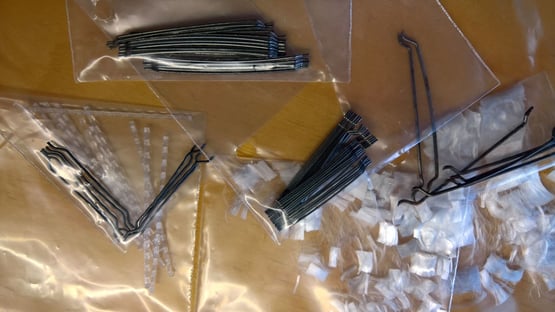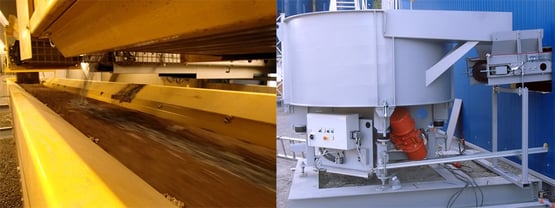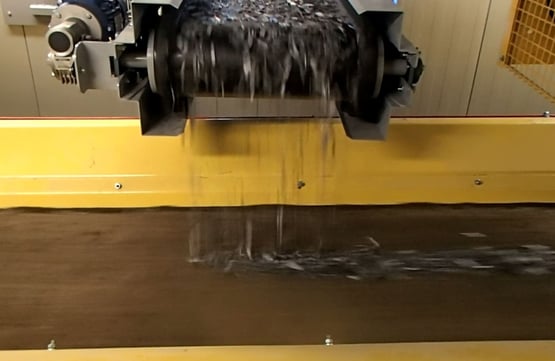Looking to produce top-tier fiber-reinforced concrete, especially shotcrete? Discover the key to achieving homogenous fiber dosing for enhanced strength, safety and durability in concrete structures – and how to ensure it doesn’t affect your production capacity.
What is fiber-reinforced concrete?
Fiber concrete is ready-mixed concrete reinforced with steel, polypropylene, fiberglass or other types of fibers, both natural and synthetic. Fibers are added to the concrete mix during production to improve the properties of hardened concrete. Fibers play a crucial role in improving characteristics such as concrete tensile strength, fire safety and overall durability.
The most common application of fiber-reinforced concrete is sprayed concrete, commonly referred to as shotcrete. Shotcrete is widely recognized as concrete for tunneling and mines. Additionally, it is commonly used in the construction of concrete slabs, offering durability and strength in various construction projects.
As construction and concrete technology continue to advance, the use of fiber-reinforced concrete is expected to grow. This will enable its application in an even wider range of concrete structures.
One of the main benefits of using fiber concrete is its cost effectiveness. This is because it allows for substantial reduction – or even complete elimination – of further steel reinforcement. This not only saves materials but also minimizes labor expenses, making it a highly economical choice for construction projects.

How to make fiber dosing homogeneous?
Fiber dosing affects the consistency of concrete and, therefore, its workability.
Ensuring an accurate fiber content is crucial for producing high-quality fiber concrete. It lays the foundation for a homogenous mixing of fibers with concrete, preventing any agglomerations. The best method for dosing fibers involves using an automatic feeder. This feeder dispenses fibers ideally onto the flowing aggregate bed, ensuring uniform distribution throughout the mixture. The feeder, functioning as a scale, sends its weighing data directly to the plant’s control system. This integration is important because the amount dosed must be clearly visible on the delivery ticket.
Quality control must also be carried out continuously. This ensures the amount of fibers in kilos or pounds is correct in relation to the volume of the ready-mixed concrete sample (m3). The target strength is achieved when the amount of fibers and all other ingredients meets the values set in the mix design.

Does fiber dosing reduce a plant’s production capacity?
Normally, dosing, weighing and mixing times are extended when fibers are added to a batch of concrete. This results in longer cycle times, reducing the production capacity of a concrete mixing plant.
However, this is not the case when using Tecwill’s “flying” aggregate dosing and weighing system. The system doses fibers directly onto the aggregate bed as it flows on the weighing belt conveyor.
With this most modern production system, the following three steps can be executed simultaneously:
- Dosing and weighing of aggregates
- Dosing and weighing of fibers
- Transporting premixed aggregates and fibers to the holding hopper above the mixer

The “flying” aggregate dosing and weighing system is a perfect solution for the production of high-quality fiber concrete. The system ensures the process is accurate, efficient and fast. It maintains high production capacity without any restrictions from adding fibers.
Read more about fiber dosing »
Learn more about ready-mix concrete plants »
If you have any questions, please contact Teemu Tuominen using the information below.
